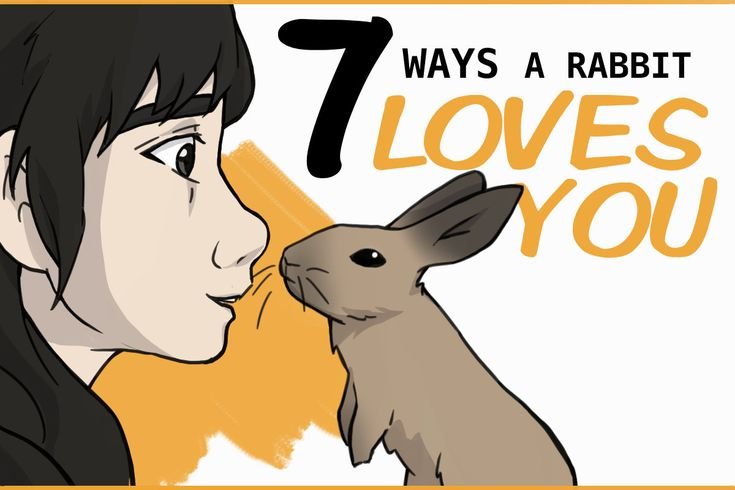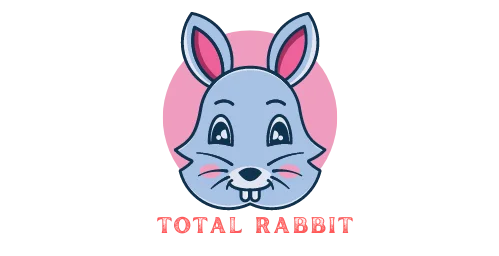Rabbit Body Language: An Illustrated Guide

Rabbit body language is a fascinating and complex subject. This guide will help you to understand some of the most common rabbit body language signals, what they mean, and how you can use them to better communicate with your rabbit.
Rabbits are social animals and communicate with each other through body language.
When two rabbits meet, they will often touch noses and sniff each other as a way of greeting and getting to know each other. If a rabbit likes what it smells, it will start to groom the other rabbit. Grooming is a sign of affection in rabbits and is also used as a way of bonding between them.
Rabbits are social creatures and communicate with each other through body language. By understanding your rabbit’s body language, you can better bond with your furry friend and pick up on any potential health concerns.
Ears: Ears are one of the most important ways that rabbits communicate.
They can express a wide range of emotions, from happiness to fear to aggression. If your rabbit’s ears are upright, it means they’re alert and interested in what’s going on around them. If their ears are flattened against their head, it usually signifies fear or anxiety.
And if their ears are laid back close to their head, it’s a sign of aggression.
Tail: The position of a rabbit’s tail can also convey how they’re feeling. A happy rabbit will often have a relaxed tail that is held upright or slightly curved over their back.
An anxious or scared rabbit will tuck their tail between their legs. And if a rabbit is angry or ready to fight, their tail will be erect and quivering.
Fur: Believe it or not, the position of a rabbit’s fur can also provide clues about their emotional state.
When they’re feeling relaxed and happy, rabbits will often groom themselves and lay down with their fur smooth and sleek. But when they’re scared or agitated, the fur on their back may stand up in what’s known as “piloerection.” This makes them look bigger and more intimidating to potential predators – or pesky housemates!
Body posture: The way a rabbit holds its body can also give you insights into its mood. A confident rabbit will stand tall with its chest out and head held high. An insecure or submissive bunny may hunch down low to the ground with its ears flat against its head.
Rabbit Human Bonding
Rabbits are social creatures and enjoy being around people. They bond easily with their owners and can become very attached to them. rabbits make great pets for people of all ages and they can provide years of companionship.
Rabbits are gentle, affectionate animals that enjoy spending time with their human companions. They bond easily with people and can become very attached to them. rabbits make great pets for people of all ages and they can provide years of companionship.
How to Socialize Rabbits
Rabbits are social creatures and love to interact with their owners. The best way to socialize a rabbit is to let them out of their cage and play with them in a safe, enclosed area. Let the rabbit approach you on its own terms and offer it treats as a reward for good behavior.
Be patient and gentle with your rabbit, and soon you’ll have a furry friend for life!
Why Does My Rabbit Sit With His Back to Me
There are a few possible reasons why your rabbit might sit with his back to you. One possibility is that he feels uncomfortable being in direct eye contact with you and is trying to avoid it. Another possibility is that he’s trying to communicate that he’s not interested in interacting with you at the moment and would prefer to be left alone.
If your rabbit typically enjoys being around you and suddenly starts sitting with his back to you, it could also be a sign that he’s feeling sick or unwell. If this is the case, it’s important to take him to the vet for a check-up as soon as possible.
Rabbit Behaviours And What They Mean
Rabbits are fascinating creatures with a range of interesting behaviours. Some of these behaviours can be difficult to understand, but they all have meaning and can be very important in helping your rabbit to communicate with you.
One common behaviour is known as ‘thumping’.
This is when a rabbit thumps their hind leg on the ground, and it usually means that they are either happy or excited. If your rabbit starts thumping their legs when you approach them, it’s a good sign that they are happy to see you!
Another behaviour that rabbits display is ‘circling’.
This often happens when a rabbit is trying to get your attention, and it can mean different things depending on the context. For example, if your rabbit circles around your feet, it could mean that they want you to follow them so they can show you something. Alternatively, if your rabbit circles around their food bowl or litter tray, it could mean that they’re hungry or need to use the toilet.
If you notice your rabbit doing any of these behaviours, take some time to try and understand what they’re trying to tell you. It might take a bit of trial and error, but deciphering your rabbit’s body language can be extremely rewarding for both of you!
Rabbit Stretching Back Legs
If you’ve ever seen a rabbit stretching its back legs, you may have wondered what exactly it’s doing. Turns out, there are several reasons why rabbits stretch their back legs.
For one, stretching helps keep the Rabbit’s muscles and joints healthy and flexible.
Additionally, it feels good! Just like we humans enjoy a good stretch after sitting for awhile, rabbits also enjoy the sensation of stretching their bodies.
Rabbits also use stretching as a form of communication.
If a Rabbit is stretched out and relaxed, it means they feel comfortable in their current environment and with the company they’re keeping. On the other hand, if a Rabbit is tense and tight while stretching, it could be an indication that something is wrong or making them feel uneasy.
So next time you see your furry friend kicking their back legs up in the air, take note of how they look and feel while doing so.
It just might give you some insight into how they’re feeling at that moment!

Credit: www.etsy.com
How Do You Read a Rabbit’S Body Language?
Rabbits are social creatures and communicate through body language. By understanding how to read a rabbit’s body language, you can better bond with your pet and provide the best possible care.
Ears: The positioning of a rabbit’s ears can tell you a lot about their mood.
Forward-facing ears mean they’re alert and interested in what’s going on around them. Backward-facing ears indicate relaxation, while flattened ears show fear or aggression.
Body: A relaxed rabbit will have a soft, round body with all four feet flat on the ground.
If they feel threatened, they may tuck their legs under their bodies to make themselves appear smaller. An aggressive rabbit may lunge forward with their front paws extended and hackles raised.
Tail: A happy rabbit will often hold their tail up high as they hop around.
A scared or nervous rabbit may tuck their tail between their legs. And if a bunny is angry, you may see them thump their hind leg on the ground repeatedly.
Eye Contact: Direct eye contact from a human can be threatening to a rabbit so they will usually avoid it if possible.
Why Does My Rabbit Put Her Head down When I Pet Her?
There are a few reasons why your rabbit may put her head down when you pet her. One reason could be that she is enjoying the attention and affection you are giving her. Another reason could be that she is trying to show you submission and trust.
rabbits are known to do this as a sign of respect towards their owners. Lastly, it could also be a sign of relaxation and contentment.
What Do Rabbit Positions Mean?
Rabbit positions can mean different things to different people, but there are some common interpretations. For example, sitting up with the front paws tucked under the chin is a sign of relaxation and contentment. Lying on the side with all four legs stretched out is often seen as a sign of submission or trust.
And finally, standing on hind legs with front paws in the air is often interpreted as playful or excited behavior. Of course, these are just a few examples and rabbit body language is complex enough that one blog post could never hope to cover it all! If you’re interested in learning more about what your rabbit’s body language might mean, consider checking out some books or online resources dedicated to the topic.
Why Do Rabbits Kick Their Back Legs When Running?
Rabbits kick their back legs when running for a variety of reasons. For one, it helps them maintain balance. Additionally, kicking their back legs helps rabbits propel themselves forward, allowing them to run faster and escape predators.
Finally, the kicking motion also helps rabbits spread their scent, which can be helpful in attracting mates or deterring rivals.
Rabbit Body Language
Conclusion
Rabbits are social creatures and communicate with each other through body language. In this illustrated guide, we’ll explore some of the most common rabbit body language cues so that you can better understand what your bunny is trying to tell you!
The first cue to look for is whether a rabbit’s ears are upright or down.
If they’re upright, it means the rabbit is alert and interested in what’s going on around them. If the ears are down, it usually indicates that the rabbit is relaxed or feeling sleepy.
Next, take a look at a rabbit’s tail.
A healthy, relaxed rabbit will have a tail that’s held up high and has a slight curve at the end. If a rabbit’s tail is low or tucked under their body, it may be a sign that they’re feeling scared or threatened.
If you see a Rabbit thumping its foot on the ground, this is usually a sign of frustration or annoyance.
However, if the thumping is accompanied by grunting sounds, it could mean that the Rabbit is in pain and you should seek veterinary attention immediately.
Finally, watch for changes in fur texture and color. When rabbits are happy and content, they will often groom themselves frequently to keep their fur clean and healthy-looking.
If you notice that your rabbit’s fur becomes patchy or starts to mat together, it could be an indication of stress or illness.
